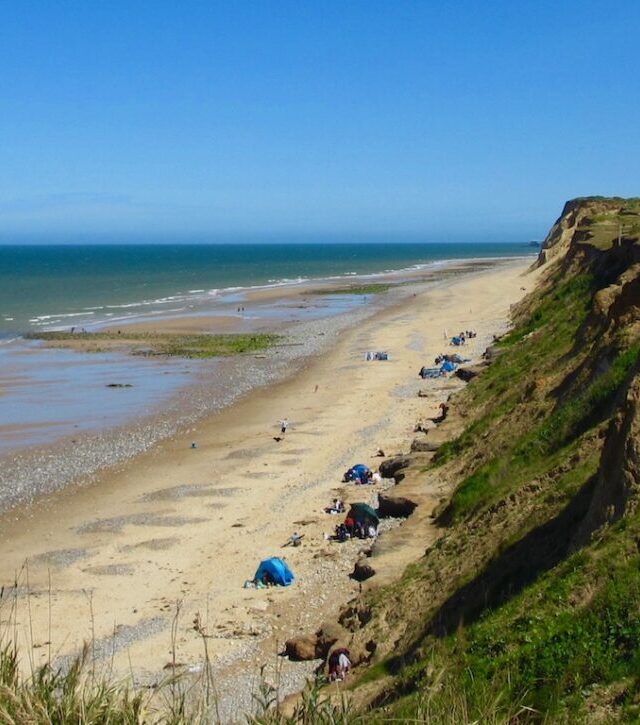
Car-free adventures alongThe Norfolk Coast PathNorfolk

Exploring the 22 fabulous miles of coast between Cromer and Wells-next-the-Sea, you can happily leave the car behind and travel by bus, train, boat, bike or on foot. Tidal marshes, sandy beaches, shingle, pinewoods and pasture: the varied landscapes of the Norfolk coast are linked by an acorn-waymarked footpath and a scenic bus route. And there’s plenty to do here besides walking. Visit Cromer Pier or Felbrigg Hall, wander round the wooded park at Sheringham or take a seal-watching boat trip from Morston Quay.

-

-
1. Cromer Pier
Regular buses and trains from Norwich head to Cromer and Sheringham. It’s a short walk from Cromer railway station down to the seafront, where Cromer Pier stretches 151 metres into the dramatic North Sea.
- Damaged by storms and wartime defences, the pier has had a turbulent history and been repaired many times, but the traditional Victorian structure is still going strong today and boasts the world’s only full-season end-of pier show in one of the UK’s five surviving pier theatres.
- Arrive by train or bus and you can get 20% off the Cromer Pier Show. See Good Journey’s directions for more details on claiming your discount and getting to Cromer Pier without a car.
-

-
2. Felbrigg Hall and Sheringham Park
There are two fabulous National Trust properties nearby. At Felbrigg Hall, three miles inland from Cromer, you can visit an opulent country house with stained-glass windows, a royal teapot, Chinese wallpaper and lots more. There’s a walled garden, landscaped park and waymarked trails through the woods.
- How do I get to Felbrigg by public transport? Follow Good Journey’s directions. Arriving car-free also means you get 10% off your ticket and a 10% discount in the tea room.
- Heading five miles westwards from Cromer along the Norfolk coast by train, bus, bike or on foot, you will pass close to Sheringham Park, landscaped by celebrated eighteenth-century designer Humphry Repton and now famous for its colourful rhododendrons and azaleas.
- You can climb the viewing towers to look across summer flowers or autumn leaves to the coast. You can explore the park’s thousand acres of woodland, cliffs and butterfly-rich meadows. And arriving without a car means a 10% discount in Sheringham Park’s café
- So how do I get to Sheringham Park without a car? Follow Good Journey’s directions
-

-
3. Walk the coast path
There are not many long-distance paths in the UK that are as well served by public transport as the Norfolk Coast path. The coastal walks between Cromer and Wells-next-the-Sea are easy to break into bite-sized portions using the hourly Coasthopper bus service.
- Tickets on this bus currently cost no more than £2. If you’re travelling westwards beyond Wells-next-the-Sea, a £12 Day ticket gives you unlimited bus travel from Norwich to Cromer and then all along the coast.
- The coastal walk from Sheringham to Cromer is about 4½ miles. The path climbs over the hill known as Beeston Bump, and passes West Runton, where a mammoth skeleton was unearthed in the 1990s. This map shows where the bus stops are.
- The 3 miles from Weybourne to Sheringham hug the coast with skylarks singing above headlands patched with thrift and clover. At Weybourne, you can take a closer look at the windmill and ruined priory. At either end, you could go for a ride on the North Norfolk steam railway. This map shows the bus stops and stations.
- Read on for more great walks and things to see along the coast.




